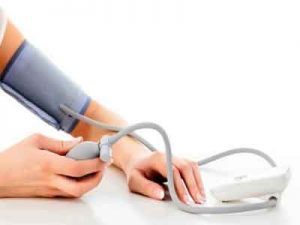- Home
- Editorial
- News
- Practice Guidelines
- Anesthesiology Guidelines
- Cancer Guidelines
- Cardiac Sciences Guidelines
- Critical Care Guidelines
- Dentistry Guidelines
- Dermatology Guidelines
- Diabetes and Endo Guidelines
- Diagnostics Guidelines
- ENT Guidelines
- Featured Practice Guidelines
- Gastroenterology Guidelines
- Geriatrics Guidelines
- Medicine Guidelines
- Nephrology Guidelines
- Neurosciences Guidelines
- Obs and Gynae Guidelines
- Ophthalmology Guidelines
- Orthopaedics Guidelines
- Paediatrics Guidelines
- Psychiatry Guidelines
- Pulmonology Guidelines
- Radiology Guidelines
- Surgery Guidelines
- Urology Guidelines
Common mistakes that affect Blood Pressure readings : AHA

American Heart Association (AHA) a pioneer body for imparting knowledge about latest research in Cardiology and awareness about topics beneficial to cardiac patients has come out with certain common mistakes which are inadvertently committed during measuring Blood Pressure and which may affect blood pressure readings . One of the largest volunteer health organization of U.S, has pin pointed common B.P measurement mistakes which may lead to an artificially high reading:
- Having a full bladder – This can add 10-15 points to your reading. You should always empty your bladder before measuring blood pressure.
- Slouching, unsupported back/feet – Poor support when sitting can increase your reading by 6-10points. Make sure you’re in a chair with your back supported and feet flat on the floor or a footstool.
- Unsupported arm – If your arm is hanging by your side or you have to hold it up during a reading, you may see numbers up to 10 points higher than they should be. Position your arm on a chair or counter, so that the measurement cuff is level with your heart.
- Wrapping the cuff over clothing – This common error can add 5-50 points to your reading. Instead, be sure the cuff is placed on a bare arm.
- When the cuff is too small – Your pressure may read 2-10 points higher. Ensure a proper fit. Your healthcare provider can help you with this.
- Sitting with crossed legs – While polite, it could increase a blood pressure reading 2-8 points. It’s best to uncross your legs as well as ensure your feet are supported.
- Talking – Answering questions, talking on the phone, etc. can add 10 points. Stay still and silent to ensure an accurate measurement.
American Heart Association has identified the need to raise awareness among clinicians about the overall benefit of getting an accurate blood pressure measurement in National High Blood Pressure Education Month,May .The solace is that effects of each mistake aren’t additive.There is a need to have a resolute and determined effort to get correct measurements keeping in mind the overall benefit of the patient.
“These simple things can make a difference in whether or not a person is classified as having high blood pressure that requires treatment,” said Michael Hochman, M.D., MPH, Associate Professor of Clinical Medicine at the Keck School of Medicine of USC and a member of the American Heart Association’s Blood Pressure Task Force. “Knowing how to measure blood pressure accurately at home, and recognizing mistakes in the physician’s office, can help you manage your pressure and avoid unnecessary medication changes.”
American Heart Association and American Medical Association have jointly launched a national programme Target BP across the country involving all the stakeholders including healthcare providers, clinics and health systems to raise awareness among clinicians about the overall benefit of getting an accurate measurement.Sensing the need to educate clinicians and healthcare professionals regarding the proper techniques to accurately measure blood pressure this programme was envisaged. No one can deny that accurate blood pressure measurements will empower clinicians to reduce hypertension prevalence and prevent cardiovascular complications in target population.

Disclaimer: This site is primarily intended for healthcare professionals. Any content/information on this website does not replace the advice of medical and/or health professionals and should not be construed as medical/diagnostic advice/endorsement or prescription. Use of this site is subject to our terms of use, privacy policy, advertisement policy. © 2020 Minerva Medical Treatment Pvt Ltd